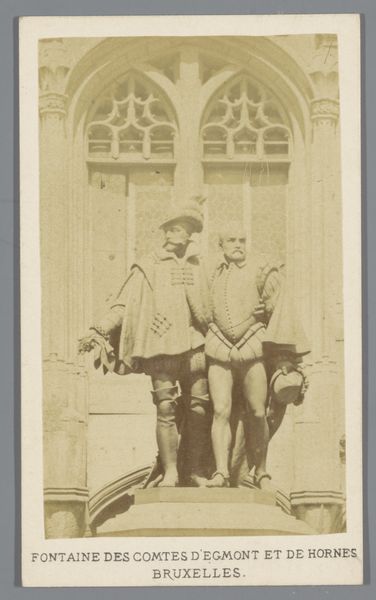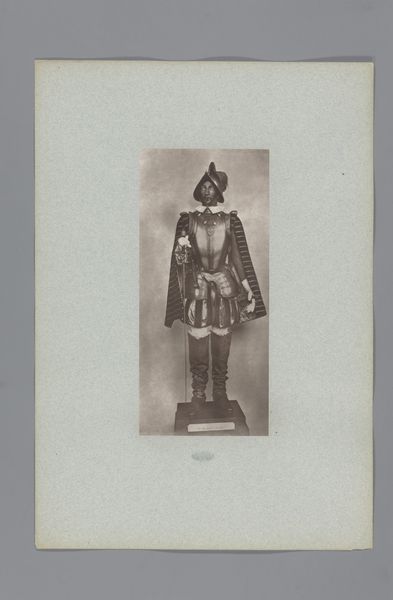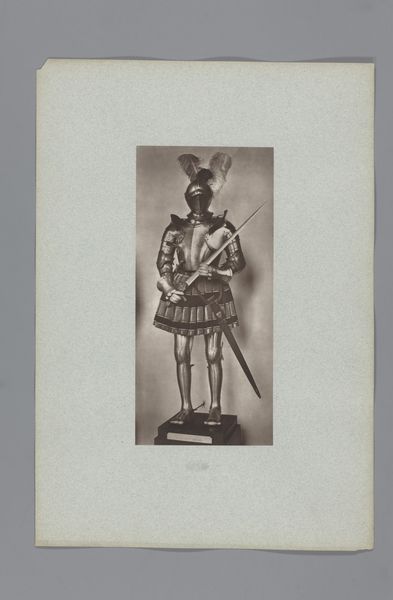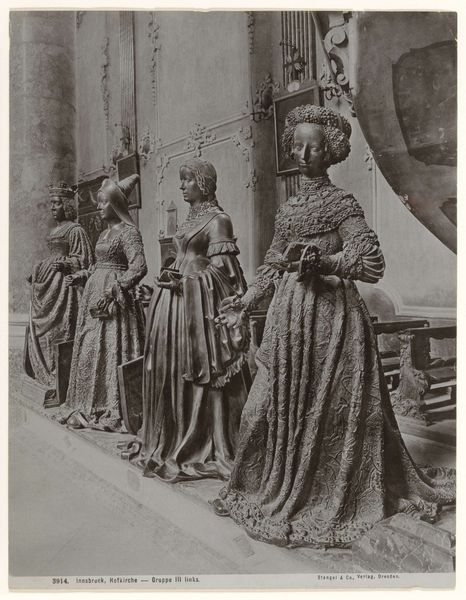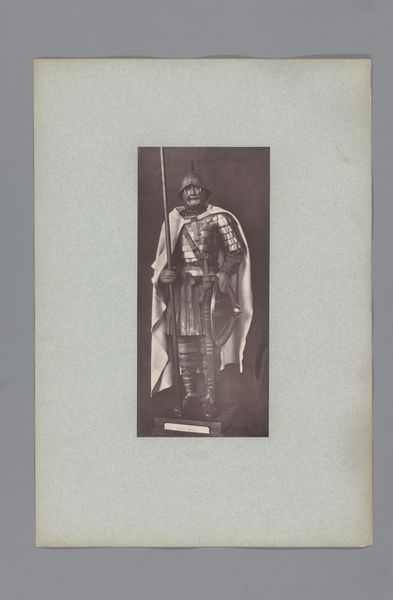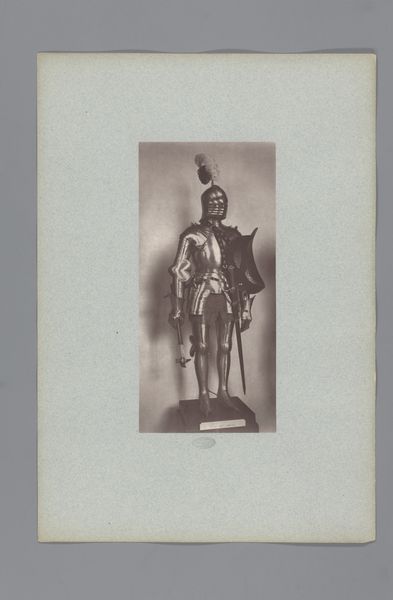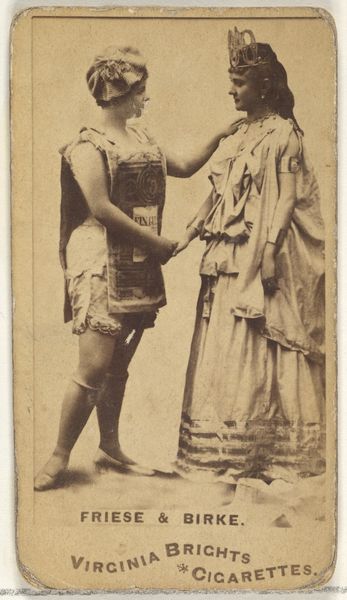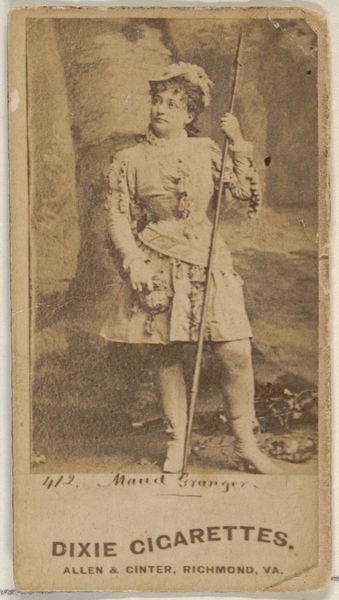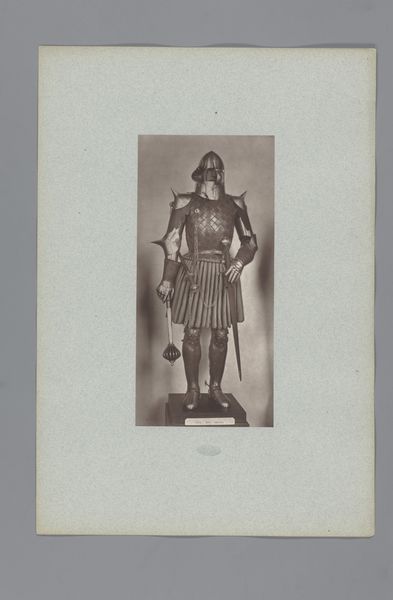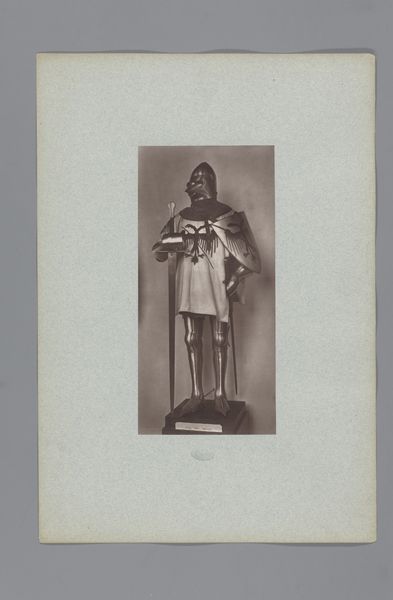
Beelden van Karel de Stoute en Filips de Goede in de Hofkerk, Innsbruck 1862 - 1880
0:00
0:00
photography, sculpture
#
portrait
#
photography
#
ancient-mediterranean
#
sculpture
Dimensions: height 105 mm, width 61 mm
Copyright: Rijks Museum: Open Domain
Curator: Let's delve into this intriguing photographic print. Baldi & Würthle created "Beelden van Karel de Stoute en Filips de Goede in de Hofkerk, Innsbruck" sometime between 1862 and 1880. It portrays sculptures of Charles the Bold and Philip the Good within the Court Church. Editor: Ah, I see it, immediately invoking a sense of old-world solemnity. There’s something spectral about these figures, caught in a kind of material time warp, isn’t there? Curator: Indeed. The photography itself becomes a document layered upon another. These sculptures originally are monuments to power and dynasty. The photographic reproduction allows for wider circulation, and consumption, changing the relationship the public has with the artifacts. Editor: Absolutely! And the craftsmanship is evident in the photographic detail. Look at the intricate patterns on their armor, the slight shadows defining their faces – you can almost hear the echoes of the stonemason’s chisel. You mentioned "consumption," and seeing these sculptures reproduced makes me wonder: who was supposed to have access to representations of nobility, and what kind of labor and production granted them that access? Curator: The proliferation of images through photography at this time challenges exclusive access to these symbolic representations, though it raises pertinent questions about authenticity and aura versus accessibility. Moreover, we see the medium reflecting upon artistic traditions of the past – it's referencing sculpture through new methods. The ornate details and material presence of stone are rendered anew in photographic chemistry. Editor: The translation from one medium to another changes the very fabric of the object, the way it comes into being, and what its existence in time actually entails! There is an existential transformation that speaks to me about the fragile human need to assert enduring meaning. Almost melancholic. Curator: An excellent way of articulating the impact of art, wouldn't you say? How our reading of historical objects change by means of mass replication. It highlights the constant shifting nature of cultural legacy. Editor: Agreed. It’s almost as if the photograph is not simply preserving history, but conversing with it. These silent, armored figures stand as enduring questions about value, and the ever-changing material conditions surrounding the experience of "seeing."
Comments
No comments
Be the first to comment and join the conversation on the ultimate creative platform.
